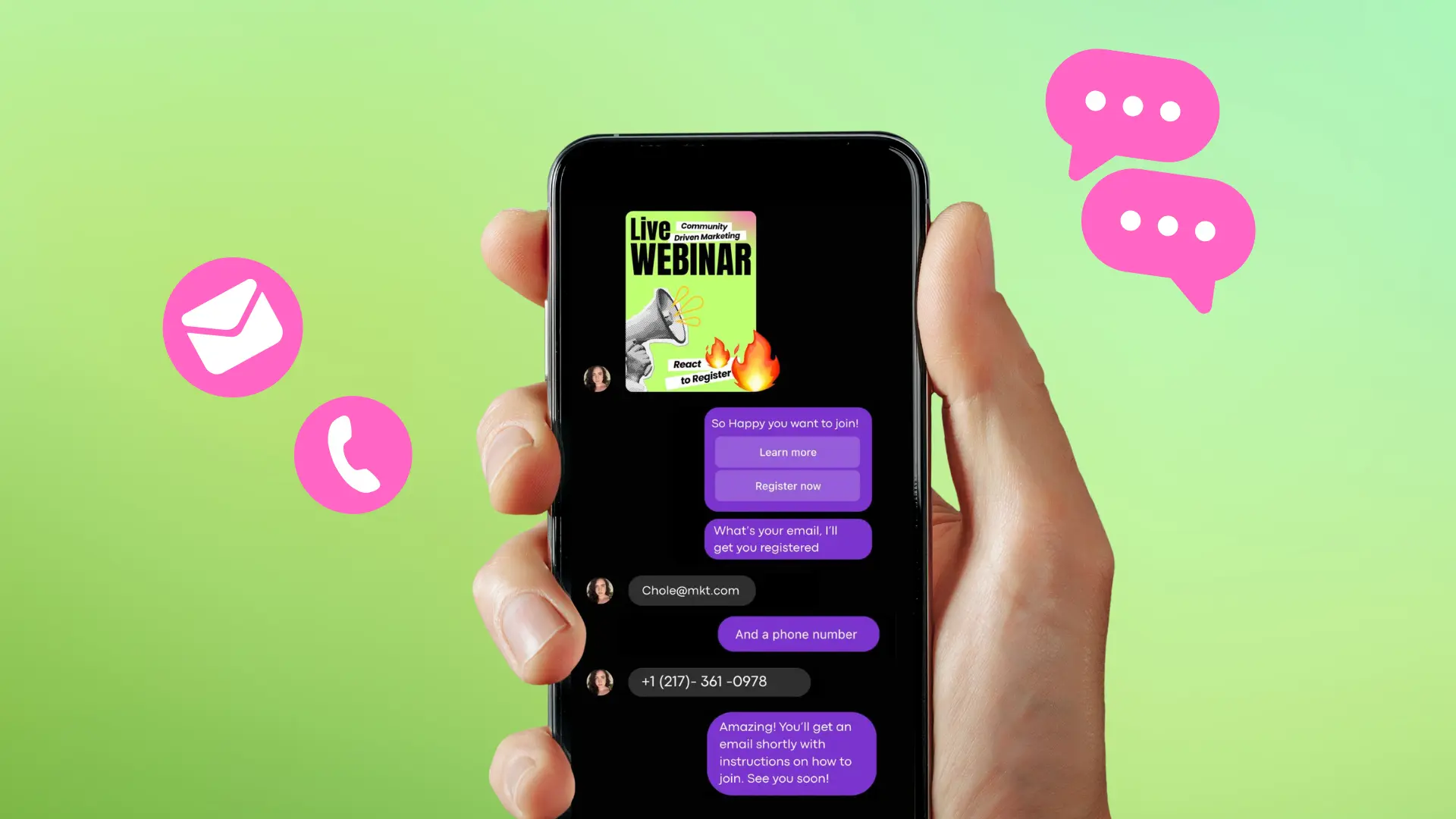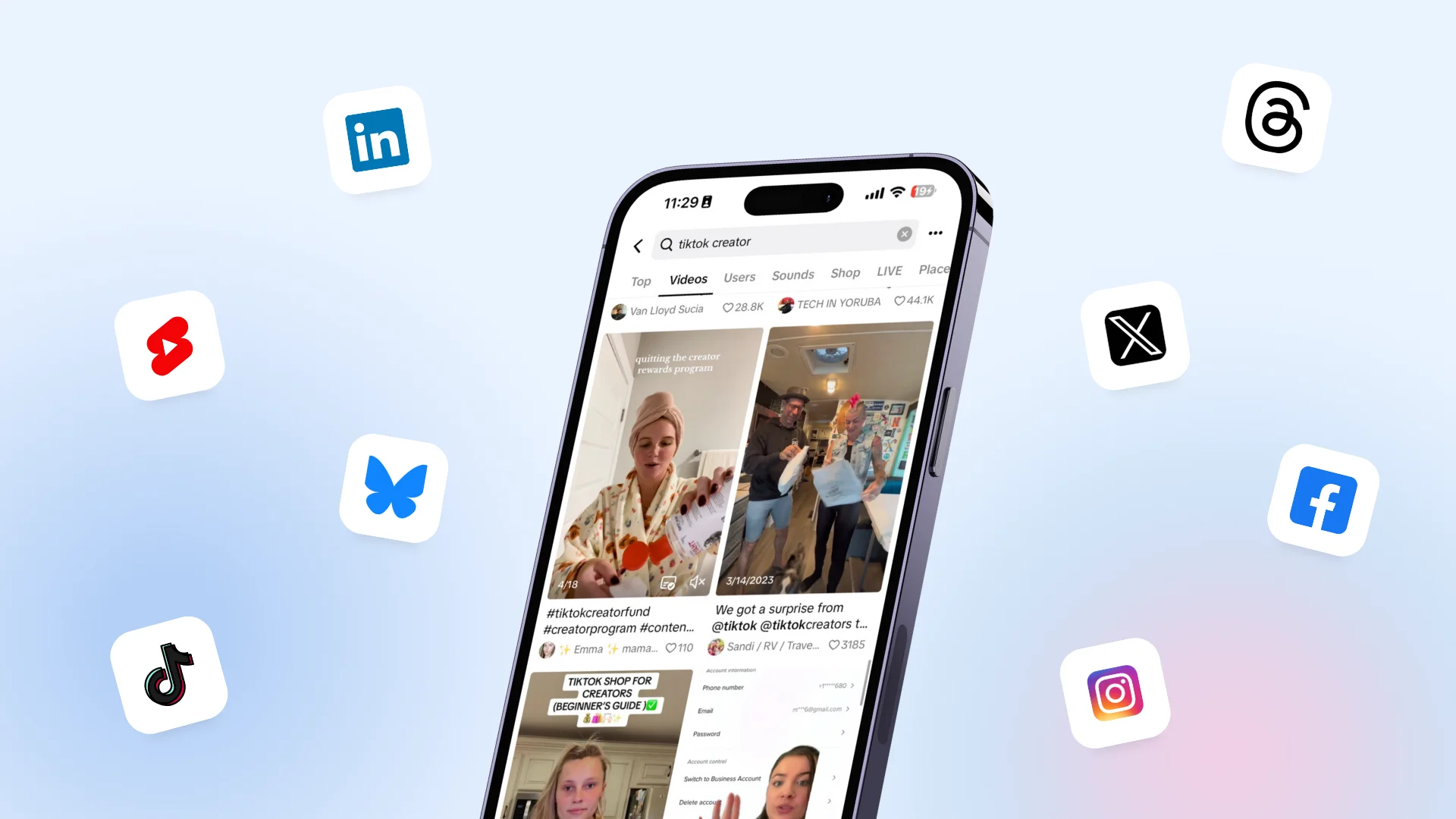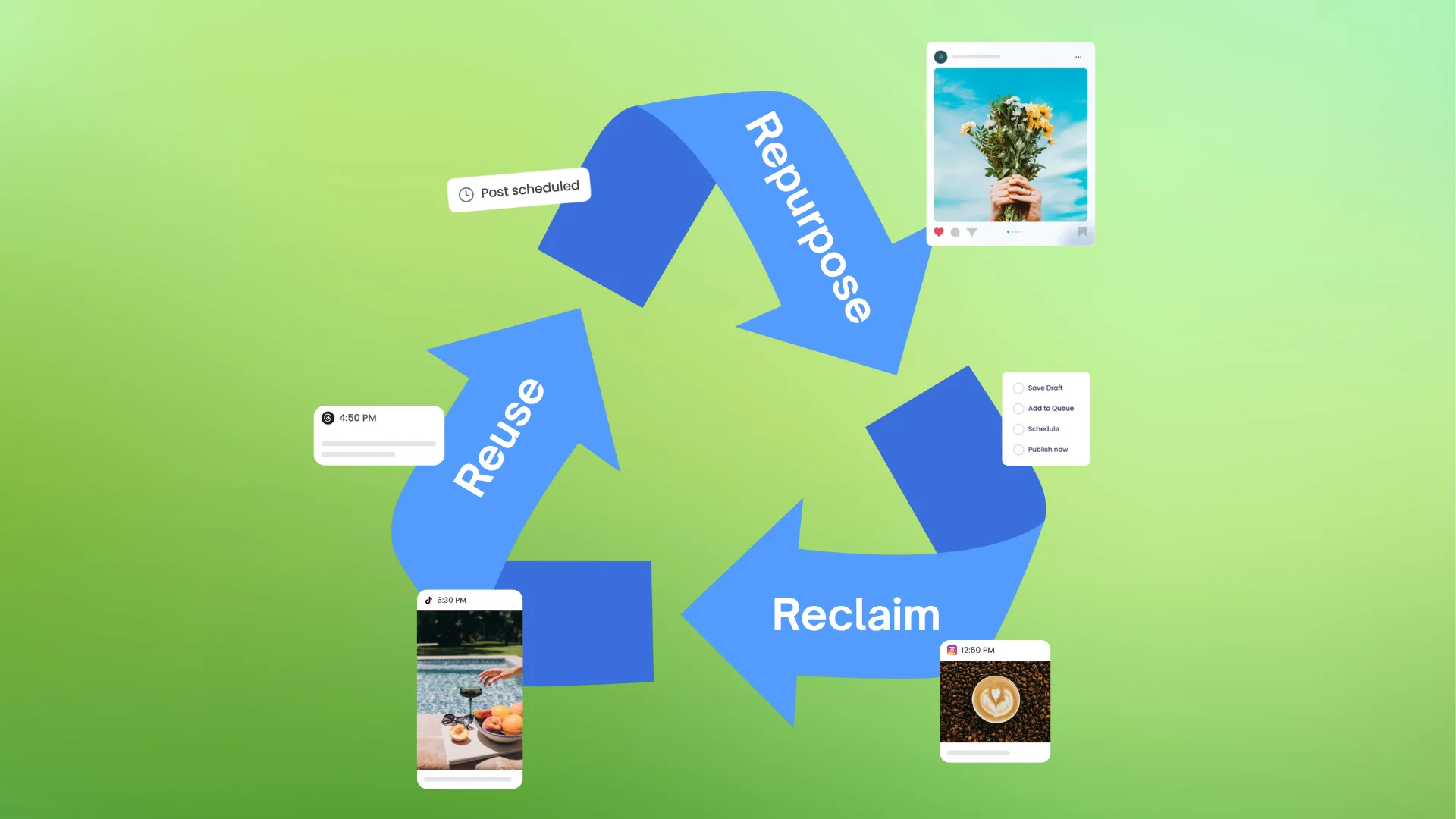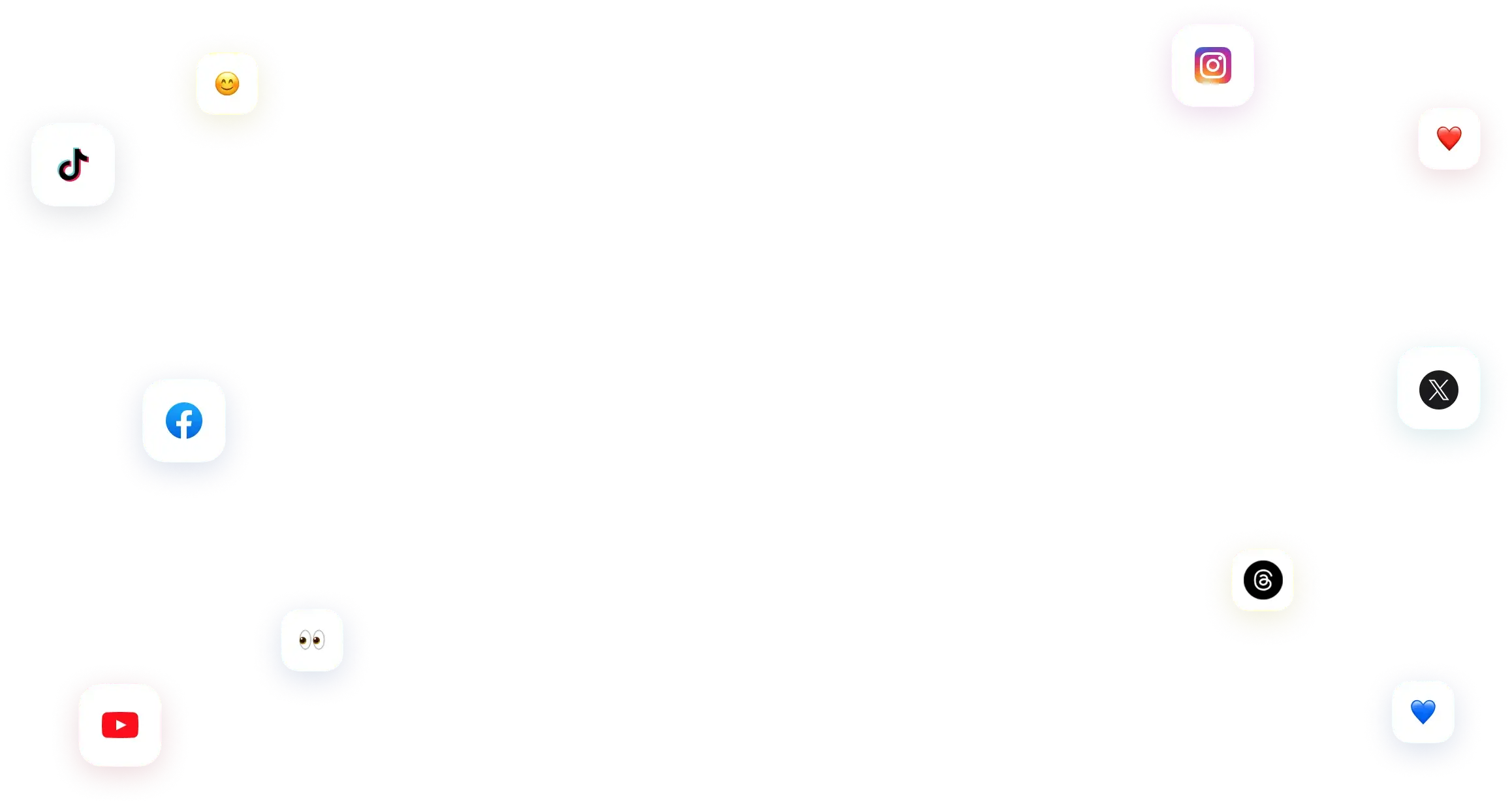New

Turn Your DMs Into Lead Gen!
Learn how to collect lead data from your DMs such as email addresses, phone numbers, and more right from your social inbox. If you are not yet automating your DMs your competitors are outpacing you.

How Something Social Saved 75% of Their Time and Increased Revenue by 15%
See how a fast-growing agency improved operations, cut down hours of manual work, and unlocked new revenue opportunities with Vista Social.
New

50 Unique Social Media Ideas for Consistent Content Creation
Discover 50 unique social media post ideas to engage your audience, grow your brand, and maintain a consistent content strategy with ease!

Mastering Content Reuse: The Key to a Consistent and Sustainable Posting Strategy
Published on April 25, 2022
7 min to read
A Social Media Content Calendar for Your Agency Clients
Summarize with AI


Table of Content

It is essential to build competent communication to connect and find common ground with the target audience, strengthen your credibility with potential customers, and promote the brand. Content marketing copes with these tasks perfectly, precisely hitting the target on all fronts: from product presentation to increasing sales.
Carefully planned content and regular posting play a significant role in achieving long-term social media goals. The regularity of publishing posts on social networks is one of the secrets of the account’s popularity and trust in the brand. On the other hand, creating exciting and high-quality posts without a specific system is unlikely to work. So, drawing up a plan is essential for forming an effective brand strategy. That is precisely when a social media content calendar comes in.
While digital marketing is rather dynamic, a good plan is what you can rely on. This post will talk about a social media content calendar, its benefits, and how to create one for your clients. Let’s go.
Table of contents
What Is a Social Media Content Calendar?
A social media content calendar is a tool in which you plan, organize, and release content for social networks for the next few days, weeks, or even months. Usually, a content calendar includes specific ideas for posts, hashtags, tags, images, statistics, release dates, and other publication parameters.
At the macro level, the content calendar gives a general overview of everything that will be published on social media during a specific time. And this is one of the best things you can do to stay up to date with your posts and social strategies.
You handle multiple clients and track all the content posted to different social channels as an agency. A content calendar is a super handy tool that allows you to maintain consistency and transparency, analyze the effectiveness of publications, and optimize the content strategy. So, is not it a lifesaver for marketers in this busy world? Absolutely.
Key Benefits of a Social Media Content Calendar
1. You get organized and reduce everyday stress.
Planning is the key to success in any activity. Content marketing is no exception.
Content creation by a small marketing team of one or two people usually does not cause difficulties. Everyone knows what, when, and where should be written and published. Errors are unlikely. And what happens when it comes to a team of 5-10 or more people who create much content daily? It is stressful.
Scheduling content for social media ensures that your carefully planned content will be published considering the available time and resources. As a result, you reduce everyday stress and have more time to focus on other priority tasks.
2. You manage content in one place and enhance efficiency.
In addition to saving time, the social media content calendar provides constant access to information. Also, the stakeholders can quickly view the calendar to see what you are working on. If you work with a team, the social media calendar serves as a destination that everyone can access and contribute to.
Without a calendar, social media marketers publish content in a void and cannot track the big picture and past results. With the calendar, marketers can look back and analyze which content worked best to adjust their strategy accordingly.
Well-planned content will help you make better ads that will be more interesting to your target audience and give more clicks on links and better engagement.
3. It helps to customize content per social media channel.
The content in all social networks should be different because different audiences visit different platforms. This means that each audience has its own interests, needs, and habits in consuming information. Why would you be subscribed to a brand account in all social channels if the content is the same there?
Good planning allows the creation of unique and high-quality content created specifically for a particular online platform. For example, relevant content for TikTok is the most native format of videos. Facebook is more focused on photo content and the information format of posts. It is not uncommon to find long-reads there, while in TikTok, everything is communicated via video.
4. You can track performance and optimization easier.
Content marketing is a resource-intensive activity. To succeed, you will have to spend much time, effort, and money. Sooner or later, you will want to evaluate how efficiently you spend resources.
Every team that achieved phenomenal results started with making a plan and setting goals. By setting clear goals and objectives, we can visualize what we want to achieve and how to measure the results.
Planning and scheduling your social media content allows you to track key content metrics. All this data is essential for the correct building of an effective content marketing strategy, and you must constantly monitor the metrics that reflect their changes to react in time and adjust in your favor.
5. You will say social media content fatigue goodbye.
Stress, chasing trends, too much content, and constant deadlines are those negative factors that may lead to a marketer’s emotional burnout. Having a straightforward algorithm of actions will allow you to avoid a situation when you create repetitive content or forget about a new post.
The publication schedule and frequency are essential indicators that determine the effectiveness of your social media advertising. A content calendar will save time and help you stick to your chosen strategy, and free up resources to solve more critical tasks. In addition, you will have a chance to give more time for analytics, social media listening, and fresh ideas to engage with the audience.
6. It helps to improve the quality of content.
Try Vista Social for Free
A social media management platform that actually helps you grow with easy-to-use content planning, scheduling, engagement and analytics tools.
Get Started NowMonotonous content and indifference to their followers are the main mistakes of novice marketers. To understand what potential buyers are interested in, you should use various content formats, experiment, and develop new creative strategies. It is impossible to write good material on the spur of the moment.
When it comes to planning, you have time to prepare your posts thoroughly, find valuable materials on the topic, ask questions to experts, and write good and engaging material.
Now you can see that using a content calendar is essential. So, it is time to proceed further and create one for your agency client.
How to Create a Social Media Calendar
Below we have listed a few essential steps to create a content calendar.
1. Check out the client onboarding questionnaire.
Check out the client onboarding questionnaire to ensure you are on the same page with a client. Then, refresh the goals and visions for the project.
Pay attention to the client’s CTA and discuss if it is still relevant or needs to be updated/changed. Reviewing the customer’s website is also necessary to ensure it functions as it should. Finally, re-evaluate budgets and your offering to achieve great results.
2. Set proper marketing goals.
Having no specific goals, the content you create is nothing more than noise, and it will not satisfy your customers’ needs. If we have not defined the goal, we will not be able to determine the KPI and understand whether our actions are effective.
Content marketing can solve different tasks, e.g., it:
- increases awareness;
- demonstrates the product;
- removes customer objections and others.
You will need to review the last year and analyze if there was growth if you got any new leads, what posts helped you with the new leads, and how high the engagement rate was.
Discussing the performance of each social media channel is also essential. For example, evaluate which platform enhanced brand awareness and had the highest conversion rate and engagement. You can decide on your further efforts and focuses based on your information.
3. Outline holidays, sales points, and initiatives that matter to the client.
Now it is time to proceed to the planning phase of your agency client’s content calendar. Holidays, important dates, and events are essential reasons to interact with your audience. Keep in mind the local and world holiday calendar to avoid template greetings and not miss important dates for creating excellent posts.
Do not forget about themed days if they match the client’s voice. For example, ThrowbackThursday is a popular social media trend when brands post a photo from a different era. Look at how Pepsi was pushing the idea of nostalgia in branding before they started focusing on keeping fresh.
If sales and promotions days do not align with holidays, your should plan these days on the calendar to maximize sales opportunities for your client.
Do not be afraid to try new trends and experiment with different content formats. Just ensure they match your client business’s core objectives and goals.
4. Choose social media calendar tool.
If you often work on campaigns for several different clients, creating customized calendars in Google Sheets can be helpful to ensure that the client understands when certain content will be posted. You will be able to keep track of dates, holidays, content themes, hashtags, and more.
If your team is big, you can consider the Asana calendar solution. The tool allows to assign tasks to the team members, add tags to each post, and keep all the information in a convenient and accessible place.
The most advanced solution is to use a social media management platform like Vista Social.
Vista Social is an expertly crafted platform that makes posting and scheduling for social media as easy as 1-2-3. With its content calendar, you will share your publishing schedule with your team members and clients by quickly exporting your scheduled, published, and content pending approval to PDF. Moreover, you can aggregate reviews, use social media listening, monitor analytics, and manage your online content library.
Once you know what calendar tool you use, you can go further and plan your content – fill in the dates and content ideas.
Conclusion
Does content need a plan? Absolutely. While publishing new posts, communicating with the audience, and promoting the brand, a marketer will probably juggle many workstreams to keep the channels active. Fortunately, there is a more efficient way. Stop your choice on Vista Social’s calendar to schedule and publish to social media profiles like a pro. Get started for free to try powerful yet simple social media management features.
About the Author
Content Writer
Read with AI
Save time reading this article using your favorite AI tool
Summarize with AI
Never Miss a Trend
Our newsletter is packed with the hottest posts and latest news in social media.

You have many things to do.
Let us help you with social media.
Use our free plan to build momentum for your social media presence.
Or skip ahead and try our paid plan to scale your social media efforts.
P.S. It will be a piece of cake 🍰 with Vista Social
Subscribe to our Newsletter!
To stay updated on the latest and greatest Social Media news. We promise not to spam you!






